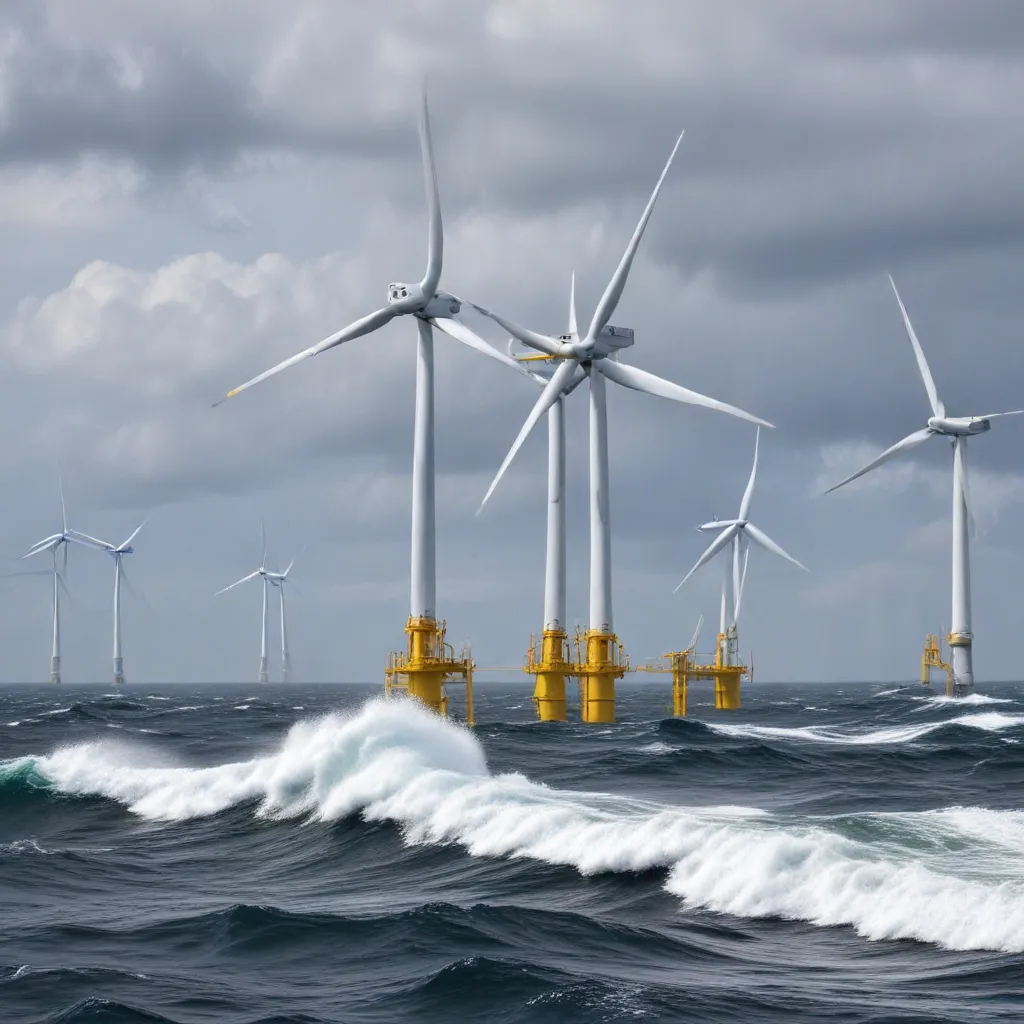
As Europe races to reduce its reliance on fossil fuels and meet ambitious climate targets, the continent’s offshore wind sector is poised to play a pivotal role in this transformative energy transition. From the North Sea to the Baltic, the vast potential of Europe’s maritime resources is being harnessed to power a greener future.
The Rise of Offshore Wind Power in Europe
Europe is at the forefront of the global offshore wind energy revolution. The continent boasts the world’s largest installed offshore wind capacity, with countries like the United Kingdom, Germany, and Denmark leading the charge. In 2019, a record 3.6 GW of new offshore wind capacity was installed across Europe, showcasing the industry’s remarkable growth.
Offshore Wind Energy Landscape
The European offshore wind landscape is characterized by a diverse array of projects, each tailored to the unique conditions of its respective sea basin. The North Sea, with its strong and consistent winds, is home to some of the largest bottom-fixed offshore wind farms, such as Hornsea One and Dogger Bank. Meanwhile, the Baltic Sea and the Atlantic Ocean are emerging as hubs for floating offshore wind technology, which unlocks access to deeper waters.
Technological Advancements
Offshore wind technology has undergone remarkable advancements, driving down costs and improving efficiency. Turbine sizes have grown exponentially, with the latest models reaching capacities of over 12 MW per unit. Innovations in foundation design, cable technology, and grid integration have further enhanced the performance and reliability of offshore wind projects.
Regulatory Frameworks
Supportive regulatory frameworks have been crucial in catalyzing the growth of offshore wind in Europe. Governments across the continent have set ambitious targets for renewable energy penetration, often with a strong emphasis on offshore wind. The European Union’s Offshore Renewable Energy Strategy provides a comprehensive blueprint for the development of this sector, addressing key challenges such as grid infrastructure, permitting, and international collaboration.
Harnessing the Potential of the Seas
As Europe’s offshore wind industry matures, stakeholders are increasingly focused on maximizing the potential of the seas while addressing environmental concerns and operational challenges.
Environmental Considerations
Offshore wind development must be carefully balanced with the preservation of marine ecosystems. Rigorous environmental impact assessments and mitigation measures are essential to ensure that these projects coexist harmoniously with wildlife, including seabirds and marine mammals. Innovative approaches, such as the integration of green hydrogen production and seawater oxygenation systems, are emerging to enhance the environmental credentials of offshore wind farms.
Grid Integration Challenges
Integrating vast amounts of offshore wind-generated electricity into the onshore grid remains a significant challenge. Addressing grid bottlenecks, investing in transmission infrastructure, and developing robust energy storage solutions are crucial to ensure the seamless integration of offshore wind into the broader energy system.
Operational Efficiency
Improving the operational efficiency of offshore wind farms is a key priority. Advancements in remote monitoring, predictive maintenance, and robotics-based inspection and repair techniques are helping to minimize downtime and optimize asset management.
Economic Implications of Offshore Wind
The growth of offshore wind in Europe has significant economic implications, ranging from investment trends to job creation and local economic development.
Investment Trends
Offshore wind has attracted substantial investment from both the public and private sectors. Governments are providing financial incentives and policy support, while private companies are increasingly recognizing the long-term potential of this industry. The development of innovative financing mechanisms, such as Power Purchase Agreements (PPAs), is further driving investment in offshore wind projects.
Job Creation and Local Economies
The offshore wind industry is a significant job creator, generating employment opportunities in areas such as manufacturing, installation, operations, and maintenance. These jobs are often concentrated in coastal regions, contributing to the economic revitalization of local communities.
Cost Competitiveness
Over the past decade, the cost of offshore wind energy has declined significantly, making it increasingly competitive with traditional fossil fuel-based power generation. Continued technological advancements, economies of scale, and policy support are expected to further enhance the cost-competitiveness of offshore wind in the coming years.
Navigating the Future of Offshore Wind
As Europe’s offshore wind sector matures, stakeholders are now looking to the future, exploring new frontiers and embracing innovative collaborations.
Emerging Offshore Wind Markets
While the North Sea, Baltic, and Atlantic regions have been the traditional hubs of offshore wind development, new markets are emerging across Europe. The Mediterranean Sea, for instance, is poised to witness a surge in floating offshore wind projects, catering to the region’s deeper waters.
Floating Offshore Wind Innovations
Floating offshore wind technology is a game-changer, unlocking access to deeper waters and expanding the geographic reach of offshore wind. European researchers and developers are at the forefront of this innovation, pioneering new floater designs, mooring systems, and dynamic cable technologies.
Sector Collaboration and Partnerships
Achieving the full potential of offshore wind in Europe will require extensive collaboration across the energy sector and beyond. Public-private partnerships, knowledge-sharing initiatives, and cross-border cooperation are essential to address challenges, drive innovation, and ensure the sustainable growth of this industry.
As Europe continues to unleash the power of the seas, its offshore wind sector is poised to play a pivotal role in the continent’s energy transformation. From technological breakthroughs to ambitious policy frameworks, the stage is set for offshore wind to propel Europe towards a greener, more resilient energy future. To learn more, visit the European Future Energy Forum.






